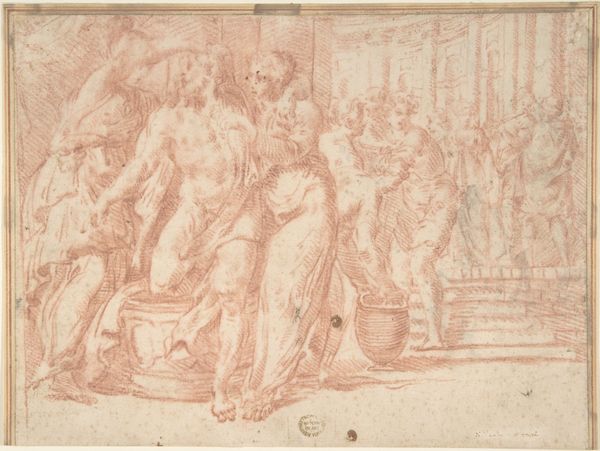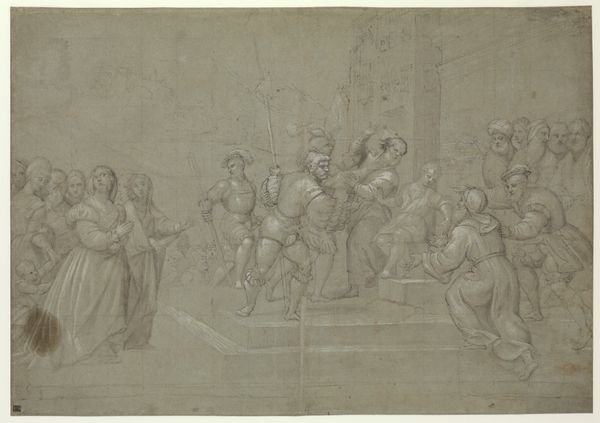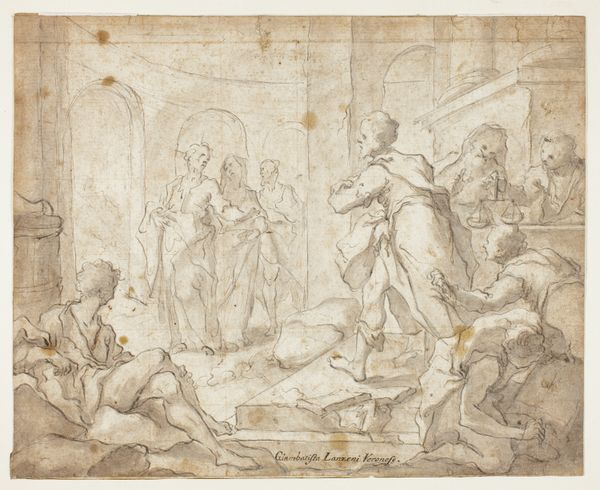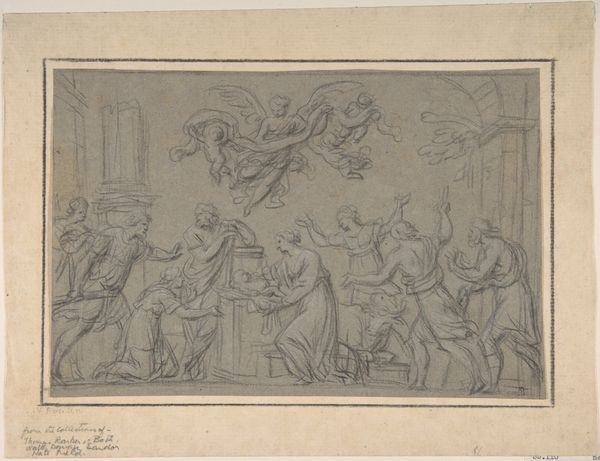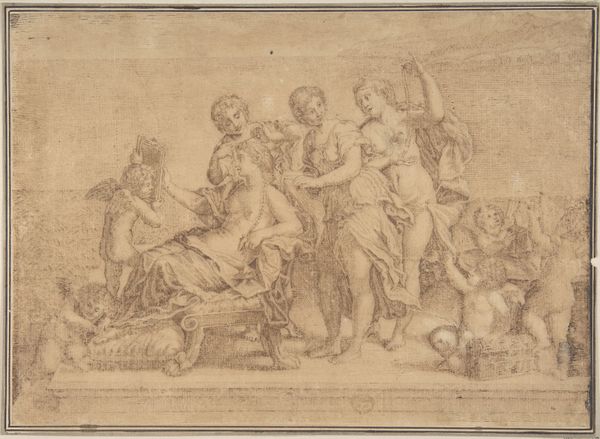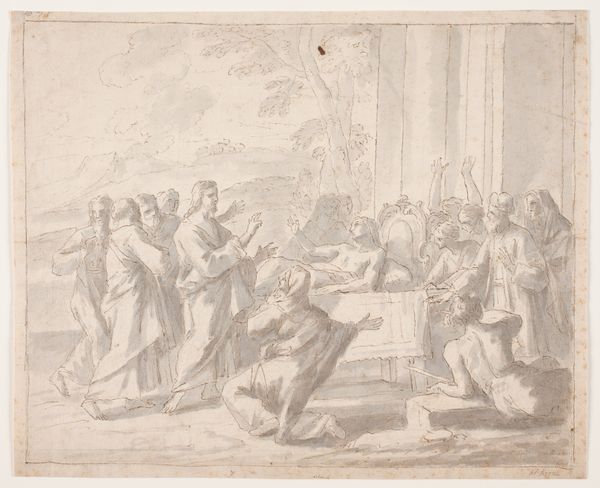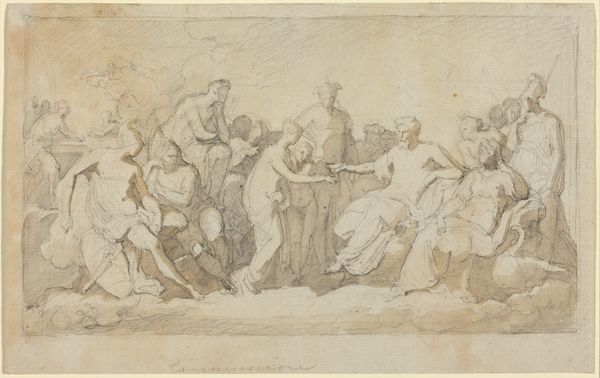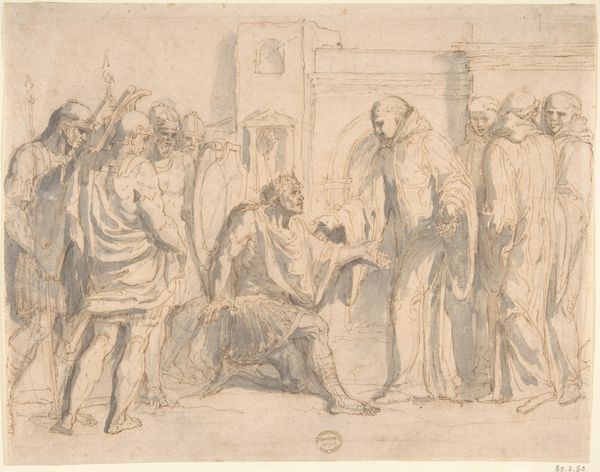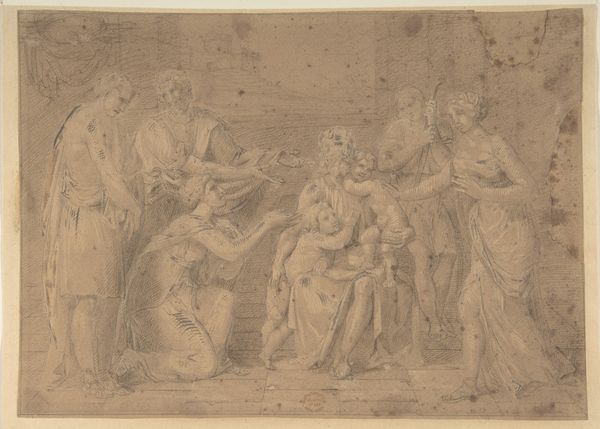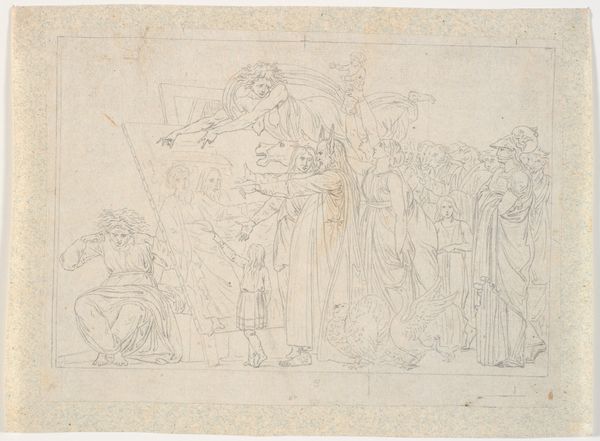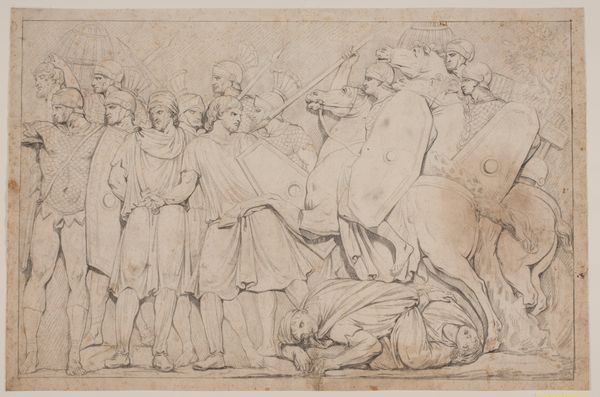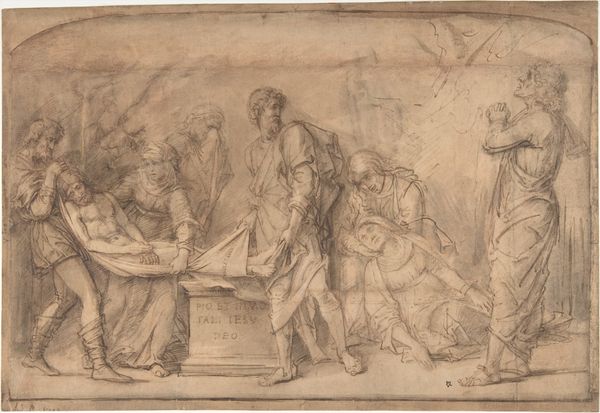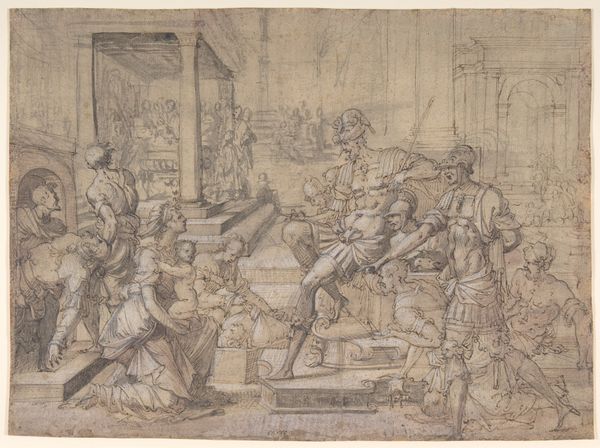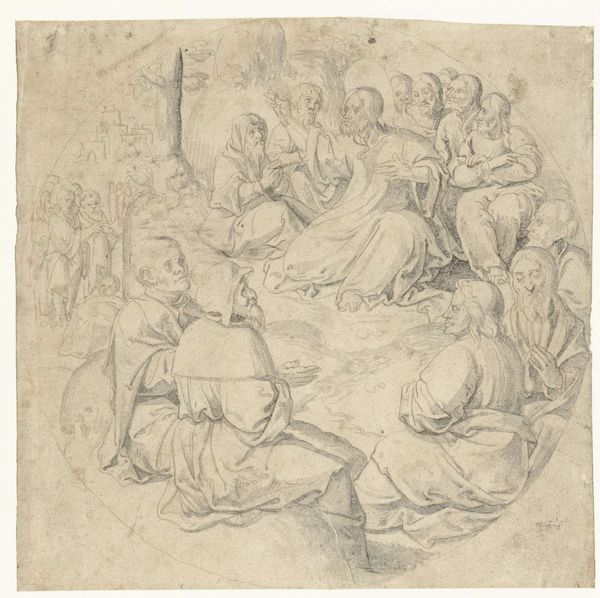
drawing, pencil
#
drawing
#
figuration
#
11_renaissance
#
pencil
#
history-painting
#
academic-art
Dimensions: 382 mm (height) x 589 mm (width) (bladmaal)
Curator: Here we have a pencil drawing entitled "Rebekka ved brønden" – "Rebecca at the Well" – made by Hendrik Krock sometime between 1671 and 1738. Editor: There's such a lightness to it, almost ephemeral. The composition, though, it has a sort of ceremonial stillness, despite the implied activity. I can feel the artist studying this crucial meeting with an allegorical bent. Curator: Precisely. This piece portrays a specific, pivotal moment in the Hebrew Bible. Rebecca, known for her beauty and kindness, is shown offering water to Abraham’s servant, who sought a wife for Isaac. This scene represents divine intervention, setting in motion a lineage vital to Judeo-Christian heritage. But consider it too as a complex staging of gender, obligation, and ethnic encounter. Who is obligated to serve whom in the arrangement between Abraham's emissary and Rebecca? Editor: Yes, that’s clearly depicted with the symbol of water being given, representing charity but also, undeniably, servitude. What I see resonating across centuries is this persistent depiction of women at sites of communal resources - wells, rivers - places where so much social exchange happens and where identity, so to speak, gets drawn out and brought into relief. And how that role intersects with faith! That specific imagery is powerful in so many world religions. Curator: And think about the implications within Krock's context. Seventeenth and early eighteenth-century European society often used biblical narratives to reinforce gender roles and expectations, particularly around feminine virtue. The artistic rendering itself normalizes certain social structures. Is Rebecca actively choosing, or is she simply fulfilling her "destiny" ordained through a patriarchal structure? What of Krock's participation as a member of the Royal Danish court in the development of that message? Editor: Seeing the larger symbolism behind simple kindness – the well as the space, the jug as the cultural container and a signifier of ethnic difference – it’s stunning. It feels as relevant to thinking about faith today as it must have centuries ago. Curator: Absolutely. Even a seemingly straightforward rendering such as Krock's is profoundly layered. Editor: It really invites a second look. Thanks for illuminating its history.
Comments
No comments
Be the first to comment and join the conversation on the ultimate creative platform.
